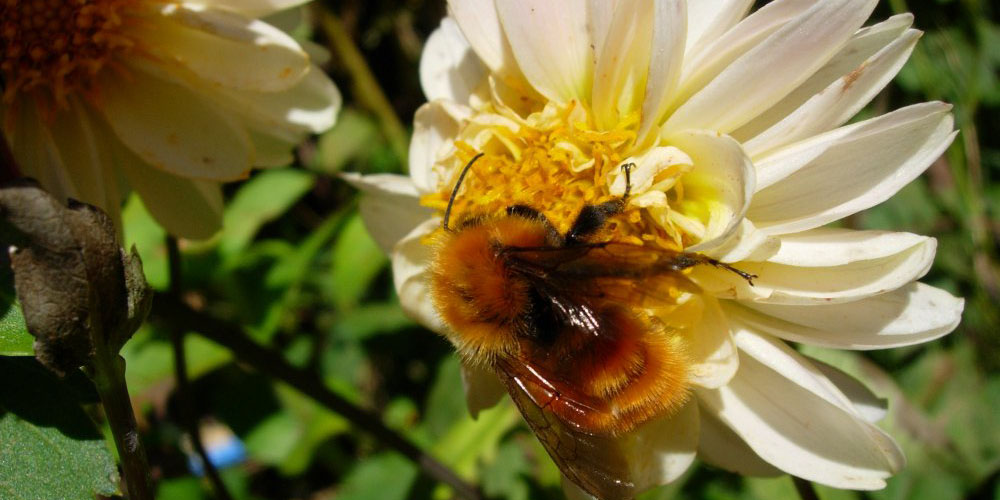When it comes to bee conservation, New Year’s resolutions may not be the right tool. Now about a week into the New Year, they’re usually already out of sight. In the past weeks, however, I’ve been reasoning about how I can move forward with BeeSafe and this blog. I learned quite a lot about how to actually stick to those resolutions. Yet, in business, they’re called “goals”. Same, same, but different. Well, but coming to the point: the steps that make resolutions reality, meaning that turn intentions into actions could apply to conservation as well. Not only for bees.
In this blog, I often discussed the “Save the Bees!” trend of the past years. Often critically. Not because I don’t like the cause, obviously, but because of the means. I profoundly dislike simplification, that’s no secret. Public claims on bee conservation, however, often over-simplify. Not all bees are honey bees, not every flower is suitable and there’s no “one fits all”, I often enough wrote about this. Therefore, I thought I’ll apply some goal setting techniques to bee conservation. We’ll see how it goes.
Saving bees with SMART goals
When you look up goal setting techniques, you pretty soon find the acronym SMART. Standing for Specific, Measurable, Achievable, Relevant, Time-bound. This concept could be useful for bee conservation. Let me explain: the claim “Save the Bees!” isn’t really specific. It means something different to a beekeeper than to a naturalist or even more to a person just learning that there are more than 20,000 bee species in the world.
So how make it specific? In this example, it may be by asking who is involved. If the claim comes from beekeepers, it may translate into “Find management practices to reduce colony losses and maintain their productivity”. If a naturalist says the same thing, it may mean “Let’s maintain bee diversity.” Finally, if the layperson wants to save bees, it may result in a bee friendly garden. Quite different outcomes for the same goal, right?
“Measurable” may seem not applicable to a goal like bee conservation, it again depends on the perspective. For the beekeeper in our example, it could be: reduce the overwintering mortality to 10% or increase the honey production by 30%. For the naturalist, it’s somewhat more tricky. How will he know that he reached his goal? For a small area, it may mean to establish all bee species described for the region in the literature. The new bee enthusiast maybe accomplishes his goal when he attracted ten bee species to his garden.
How achievable is bee conservation?
Conservation often seems a red queen dilemma: you have to run as hard as you can and, if you’re lucky, end up at the same place you initially started. In addition, as the specific goals differ depending on the conditions, it’s possible that you fall behind despite your efforts to run as fast as you can. This is no reason for not trying, though. Because the relevance of pollinators is very high in multiple aspects. Food security is one of them, but also the functioning of whole ecosystems. So what is missing to make bee conservation a SMART goal? Well, the last letter, standing for “time-bound”.
This is maybe the point that is most difficult to translate in this context. Because “saving bees” doesn’t stop at a certain point, it’s always a work in progress. We’ll never reach the point to say: “Ok, done, we saved the bees! Now let’s go for new goals.”. We have to start, and the generations after us will have to continue. It’s more a habit than a goal.
Despite the pessimism that comes over me when I see the news, there are some positive signals out there. Insect decline has become big news. In Germany, the Ministry of Environment launched a program for insect conservation that obviously includes bees. One of the measures is financing the Entomological Association in Krefeld, which published the much-discussed numbers about insect decline. The action plan includes measures like creating and maintaining habitat for insects and minimizing pesticide use as well. The German Environmental Agency published a 5-point action plan for sustainable pesticide use, including some actual recommendations on how to achieve the claim of reduced pesticide use.
On a more global scale, I’m looking with some hope on the activities of the IPBES – the Intergovernmental Science-Policy Platform on Biodiversity and Ecosystem Services. They published a report on pollination with a comprehensive summary for policymakers and many reports on ecosystem services in different regions of the world. Their work has been compared with the IPCC, the Intergovernmental Panel on Climate Change. Hopefully, they will create similar awareness – and fewer denials.
BeeSafe’s contribution to bee conservation
What all action plans, reports etc. have in common is emphasizing the importance of education, transparent information and social commitment. Which relates to BeeSafe. Last year, I celebrated BeeSafe’s fifth anniversary with my first ever webinar. There were some technical difficulties, but the feedback was very kind. As one of my main goals is to make bee science accessible without simplifying, I’m planning to make webinars and courses are a larger part of my activity.
First webinars will be out in the second half of the year. I will keep you posted. The other plan is to do offline seminars as well. I already do quite a lot of talks, but the idea is to go to the agricultural schools, stewardship services etc. and talk bees. We will see.
Finally, I will continue to talk bees and bee science in this blog and in articles I write for journals. I may come up with some more ideas during the year. This may seem small, but I’m deeply convinced that many problems, also bee conservation, need education. Otherwise, the claim “Save the bees!” may also end without any achievement. It’s out there now… you have the permission to keep me accountable.



